Belgium, the Netherlands, and Luxembourg
Like many other areas of Europe, what is now Austria has a past that includes Celtic and Roman influences. And somewhere along the way emerged three separate countries..
The Belgae
The Belgae were a collection of Celtic and Germanic tribes of people living in what the Romans called Gaul and what became Belgium, the Netherlands, and England for a few centuries either side of the B.C./A.D. divide.
Nijmegen
Nijmegen is the oldest settlement in what is now the Netherlands, dating to early Roman times.
Maastricht
Permanent settlements in what is now Maastricht date to Roman times, to the 1st Century B.C., although evidence of previous Celtic influence abounds. The Roman name of the settlement was Mosae Trajectum. No less than the Emperor Augustus ordered the construction of a bridge over the River Maas and a castle to provide protection for the settlement.
Amsterdam
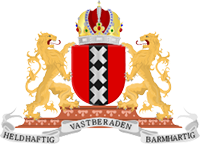
Amsterdam is the country's most populous city and one of two national capitals. As with other cities in the Low Countries, the name comes from geography: a dam in the River Amstel, where the river flowed into the Zuiderzee, now called the Ijsselmeer. In the early days, the city was named Amstelerdam. The settlement dates to the 1200s. In the first decade of the 1300s, Amsterdam won city rights, giving the residents to have self-jurisdiction. Also in this century grew trade with the cities of the Hanseatic League. Devastating fires gutted the city in the 15th Century; as a result, city fathers decreed that new buildings would be made of stone. Rare is the wooden house that remains from medieval times. Amsterdam residents began digging the city's three main canals in 1613. The city grew in population and prestige.
Rotterdam
The Dutch city of Rotterdam began more than a century ago as a settlement on the stream Rotte, also written as Rotta. In part to combat regular flooding, people living in the area built dikes and dams, including the one giving the city its eventual name, in the 1260s.
The Franks
Especially under Charlemagne, what is now the Benelux nations was once nearly entirely under Frankish control. This lasted for many years.
The Holy Roman Empire
Following Frankish rule came that of the Holy Roman Empire.
The Burgundian Circle and the Austrian Netherlands
The Burgundian Circle was an administrative district of the Holy Roman Empire that existed for nearly three centuries and comprised what are now the Low Countries and some parts of France. The Circle was for a time called the Austrian Netherlands.
The Burgundian Netherlands
The Burgundian Netherlands was a geographical and political entity that lasted for nearly a century in the Middle Ages. It comprised what is now Belgium, Luxembourg, the Netherlands, and northern France.
The Development of the States-General
The Dutch and Portuguese fought for supremacy of economics and trade for a few decades in the 17th Century.
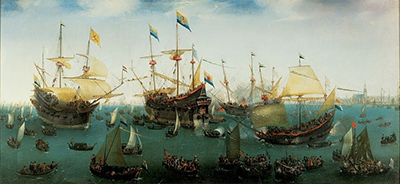
The Dutch Republic
The Dutch Republic was a political and geographical confederation of the European Low Countries that existed for a few centuries in the early modern era. It was a nominally representative government that oversaw the doings and dealings of a number of important Dutch cities.
The Dutch Golden Age
The Dutch Golden Age was a period of about a century in which the Netherlands ruled supreme in commerce, culture, and learning.
The House of Orange-Nassau
The House of Orange-Nassau, the current reigning royal line of the Netherlands, dates to medieval times and includes close to two dozen monarchs in all.
William the Silent
William of Orange, also known as William the Silent, was perhaps the most famous statesman and war leader in the early history of the Netherlands.
The Dutch East India Company
The Dutch East India Company powered exploration and investment by the Netherlands for more than two centuries in the late Middle Ages.
The Dutch West India Company
The Dutch West India Company was an umbrella organization for the expansion of trade and influence pursued by the Dutch Republic into the Western Hemisphere in the 17th and 18th Centuries.
The Anglo-Dutch Wars
The Anglo-Dutch Wars were a series of mainly naval conflicts between England and the Netherlands in the 17th Century. Both nations were striving for supremacy on the high seas and in their respective colonies.
The Dutch-Portuguese War
The Dutch and Portuguese fought for supremacy of economics and trade for a few decades in the 17th Century.
The Dutch Tulip Bubble
The Dutch Tulip Bubble was an economic episode that bankrupted many individuals and cost many others their credibility but left the government and its treasury and reputation largely unscathed. Many people also refer to this episode as Tulip Mania.
The Batavian Revolution and Republic
The Batavian Revolution and Republic occurred during a time of great upheaval in the Netherlands and were a transition from representative government to monarchy.
The Kingdom of Holland
The Kingdom of Holland was a short-lived monarchy in the early 19th Century. The list of people who held the title of King of Holland is very short.
The Brabant Revolution
The Brabant Revolution was a short-lived uprising against Austrian rule in the Low Countries that resulted in an infant independent state of Belgium. This occurred in the late 18th Century.
The United Belgian States
The United Belgian States was a brief window into modern independence for a collection of Low Countries provinces in the late 18th Century.
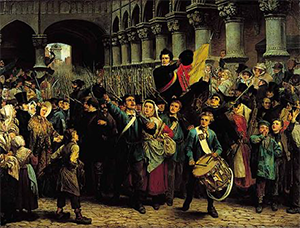
King William I of the Netherlands
William I was the first King of the Netherlands, ruling for more than two decades in the first half of the 19th Century.
The Belgian Revolution
The Belgian Revolution was the culmination of the airing of a number of longstanding grievances, resulting in violent protests that created a new country from the southern part of the Netherlands in the 19th Century.
King Leopold I of Belgium
Leopold I was the first King of Belgium, ruling for more than three decades in the 19th Century. He led his forces to victory in the revolution.
The Ten Days' Campaign
The Ten Days' Campaign was a Dutch military attempt to suppress the Belgian independence bid of 1830. Although the Dutch had military superiority, their efforts were eventually unsuccessful.
King William II of the Netherlands
William II was King of the Netherlands, ruling for nine years in the first half of the 19th Century.
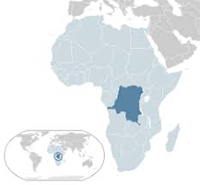
King Leopold II of Belgium
Leopold II was King of Belgium for more than four decades, reigning into the 20th Century. He was known as a world statesman.
The Congo Free State
The Congo Free State was an autocratic state, made up of what is now the Democratic Republic of the Congo, that existed for nearly three decades in the second half of the 19th Century.
King William III of the Netherlands
William III was King of the Netherlands, ruling for more than four decades in the 19th Century.
Luxembourg Before the 20th Century
What is now Luxembourg was controlled by a variety of peoples and powers in ancient times, through the Middle Ages, and into the modern era.
Adolphe: Grand Duke of Luxembourg
Adolphe was the first Grand Duke of Luxembourg of the 20th Century. He ruled for 15 years.
William IV: Grand Duke of Luxembourg
William IV was Grand Duke of Luxembourg for a handful of years in the early 20th Century.
Marie-Adelaide: Grand Duchess of Luxembourg
Marie-Adelaide was Grand Duchess of Luxembourg for a handful of years in the early 20th Century, significantly ruling during the First World War.
King Albert I of Belgium
Albert I was King of Belgium for more than two decades in the first half of the 20th Century, most notably enduring an occupation by Germany during World War I.
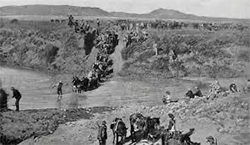
Queen Wilhelmina of the Netherlands
Queen Wilhelmina I was the longest-serving monarch of the Netherlands, ruling for most of six decades in the 19th and 20th Centuries.
The Boer Wars
The Boer Wars were a series of struggles for supremacy in southern Africa between forces of the United Kingdom and settlers originally from elsewhere in Europe.
Charlotte: Grand Duchess of Luxembourg
Charlotte was Grand Duchess of Luxembourg for more than four decades in the 20th Century, significantly ruling during the Second World War.
Jean: Grand Duke of Luxembourg
Jean was Grand Duke of Luxembourg for nearly four decades in the 20th Century.
King Leopold III of Belgium
Leopold III was King of Belgium for nearly two decades before and after World War II. He was a controversial monarch who ended his reign through abdication.
King Baudouin of Belgium
Baudouin was King of Belgium for more than four decades in the second half of the 20th Century.
The Delta Works
The Delta Works is a number of land protection projects in the Netherlands. Workers completed the series of dams, dykes, levees, locks, sluices, and storm barriers between 1954 and 1997.
The North Sea Flood of 1953
The North Sea Flood of 1953 was the most damaging waterborne disaster in centuries, causing widespread fatalities and damage in Belgium, England, the Netherlands, and Scotland.
Queen Juliana of the Netherlands
Queen Juliana was Queen of the Netherlands for more than three decades in the second half of the 20th Century.
King Albert II of Belgium
Albert II was King of Belgium for two decades, ruling into the 21st Century.
Queen Beatrix of the Netherlands
Beatrix was Queen of the Netherlands for more than three decades through the end of the 20th Century and into the 21st.
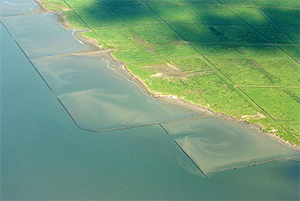
The Zuiderzee Works
The Zuiderzee Works is a massive system of water retention and land reclamation, the most extensive hydraulic engineering project of the 20th Century in the Netherlands.
King Philippe of Belgium
King Philippe is the current ruler of Belgium. His reign began in 2013.
Henri: Grand Duke of Luxembourg
Henri is Grand Duke of Luxembourg. He is the sixth monarch from the House of Nassau-Weilburg.
The Benelux Union
The Benelux Union is a political and economic union made up of neighboring nations Belgium, Luxembourg, and the Netherlands. The union's origins date to the mid-20th Century.
The European Coal and Steel Community
The European Coal and Steel Community (ECSC) was an international entity that fostered communication and cooperation between nations in the second half of the 20th Century.
The European Economic Community
The European Economic Community was an extension of the European Coal and Steel Community and a direct forerunner of the European Union.
The European Union
The European Union is an international economic and political organization comprising most of the countries of Europe.
|
Search This Site
 Custom Search
|
Social Studies for Kids
copyright 2002�2020
David White
